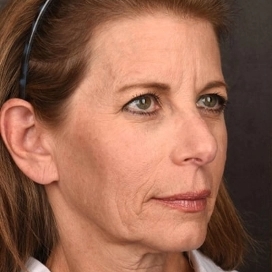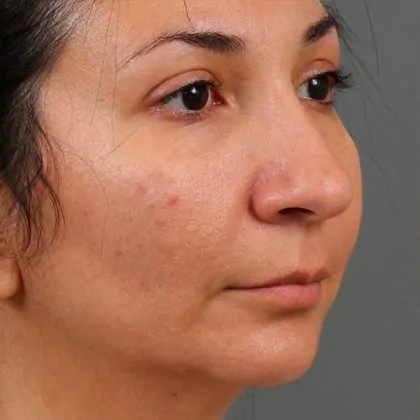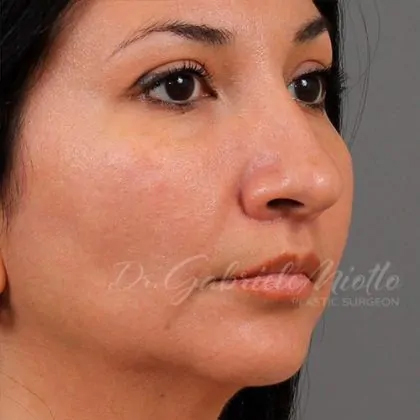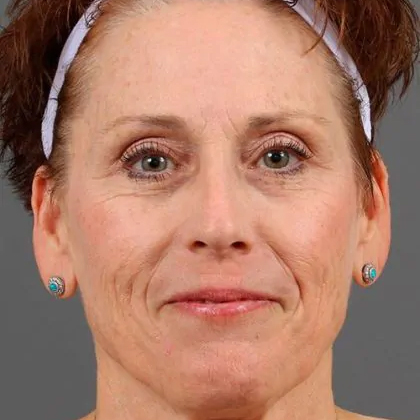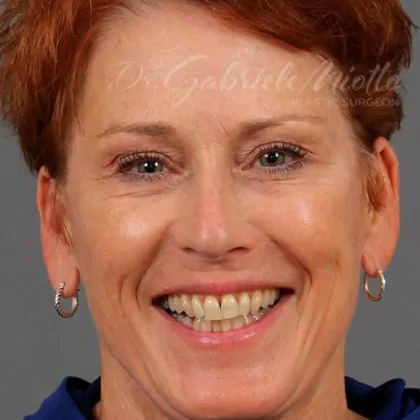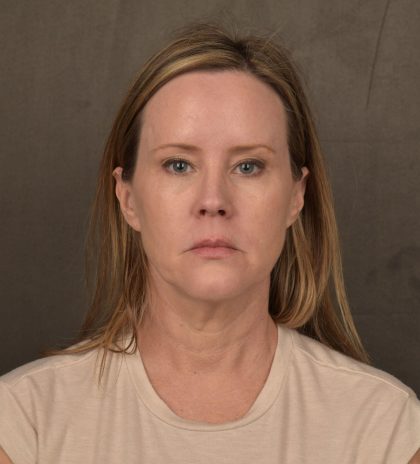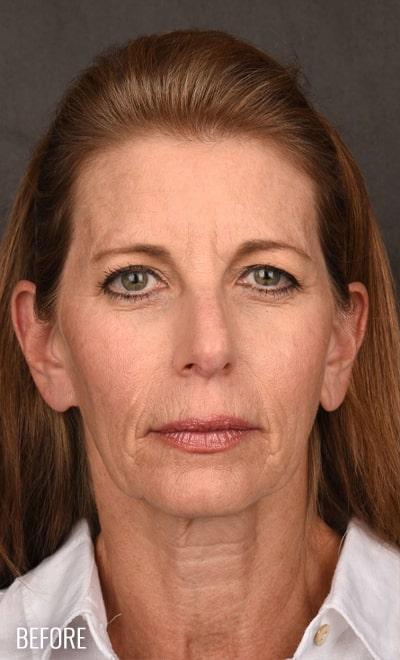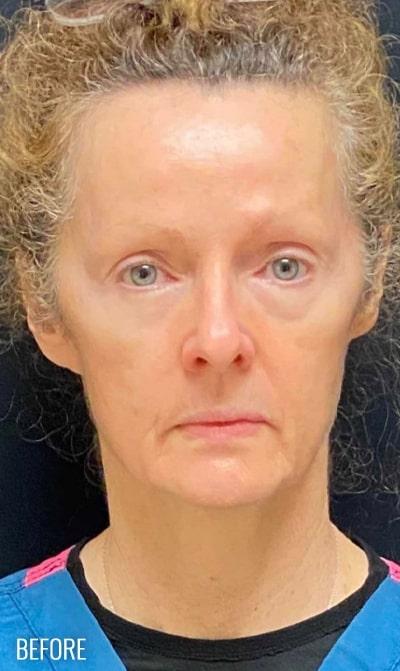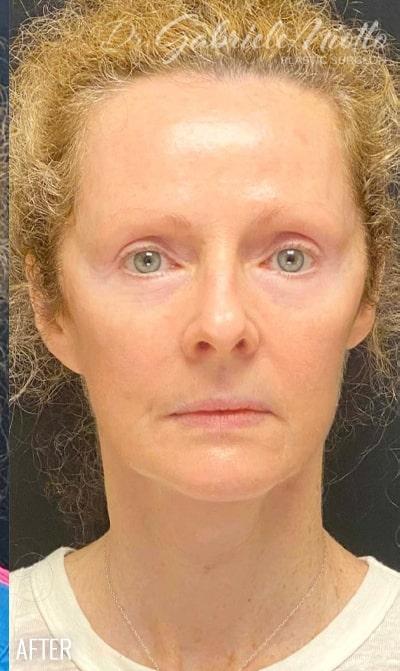Liquid Facelift
Conveniently located to serve the areas of Atlanta, GA

A non-surgical facelift or a non-surgical lift is a combination of procedures done in the office using injectables, threads and skin treatments to improve facial aging with no surgery.
A non-surgical facelift (aka liquid facelift, non-surgical lift and liquid lift) offers individuals a way to rejuvenate their facial features using a series of minimally invasive and non-invasive treatments, and procedures. These treatments and procedures include dermal filler and botulinum toxin injections, chemical peels, dermabrasion, microdermabrasion, laser skin resurfacing and threading. Since every individual is unique at ME Plastic Surgery in Atlanta, Dr. Gabriele Miotto creates each patient a personalized treatment plan.
Contents
- 1 Before and After Photos
- 2 Non-Surgical Lift Prep
- 3 Benefits
- 4 Fewer risks
- 5 An affordable option
- 6 Dependable results
- 7 Temporary results
- 8 Minimal aftercare
- 9 How long do the results of a liquid lift last?
- 10 Non-Surgical Facelift
- 11 Liquid Lift Concerns
- 12 Procedures
- 13 Botulinum toxin products
- 14 Botulinum Toxin Longevity
- 15 Botulinum Toxin Risks
- 16 Botulinum toxin injections
- 17 Dermal fillers
- 18 Dermal Fillers in Liquid Lift
- 19 Potential complications
- 20 Radiesse
- 21 Radiesse Longevity
- 22 Restylane
- 23 Sculptra
- 24 Potential complications include
- 25 Dermal filler injections
- 26 A chemical peel
- 27 Dermabrasion
- 28 Potential complications
- 29 Microdermabrasion
- 30 Laser skin resurfacing
- 31 Thread Lift for Facelift
- 32 Initial consultation
- 33 Choosing an Expert Injector
- 34 FAQ
- 34.1 Can non-surgical facelifts in atlanta effectively reduce the signs of aging?
- 34.2 Are non-surgical facelifts effective?
- 34.3 What is the difference between a surgical and non-surgical facelift?
- 34.4 How can I learn more about a non-surgical facelift procedure?
- 34.5 How do surgical and non-surgical facelifts differ?
- 34.6 Who should consider having a non-surgical facelift in atlanta?
Before and After Photos
Non-Surgical Lift Prep
- DO NOT take any aspirin for 7-10 days before your scheduled procedure. Please contact the office if you are prescribed aspirin by your cardiologist or Primary Care Provider (PCP). Do not take NSAIDS (Aleve, Motrin, Ibuprofen) for 5 days before injections. You may take Tylenol (Acetaminophen) if needed for aches or pains.
- Discontinue Vitamin E 7 days before injections.
- Avoid the following herbal supplements for 7 days before your injections: Echinacea, Ephedra / Phentermine (used for weight loss), Feverfew, Fish Oils, Garlic, Ginkgo Biloba, Goldenseal, Kava-Kava, Licorice, Saw Palmetto, St. John’s Wort and Valerian.
- Stop Smoking. The harmful effects of smoking cause a lot of wrinkles and skin damage!
- Alcohol can promote bleeding, so it is best to avoid alcohol intake for at least a few days before the injections.
- Start oral anti-bruising supplements with Arnica Montana / Bromelain the day before or the day of your injections and continue for 3-5 days after the injections. Fresh pineapple is rich in Bromelain, so add it to your diet.
Benefits
Quickly provides noticeable results
Quickly provides noticeable results — many treatments provide immediate results, whereas others offer results within a week.
A shorter recovery time
A shorter recovery time — with a traditional rhytidectomy, patients receive general anesthesia and have a lengthy recovery that requires taking a substantial amount of time off work or school. With some liquid facelifts, a patient returns to work or school the very same day.
Fewer risks
Fewer risks — since during a non-surgical facelift patients do not receive general anesthesia or require Dr. Miotto to create large incisions, the possible risks associated with a liquid facelift are fewer than the potential risks of a rhytidectomy.
An affordable option
An affordable facial-rejuvenation option — even with the range of treatments the expert injector uses during a liquid lift, it remains less expensive than a rhytidectomy.
Dependable results
Dependable results — as with any surgical procedure, the results of a rhytidectomy can be less than what the patient expects. Therefore, a patient may spend thousands of dollars for a rhytidectomy that provides unsatisfactory results. The liquid lift allows patients to make a few changes and then enhance their results as they see fit.
Temporary results
Temporary results — since the results of a non-surgical facelift are temporary, patients can make adjustments during their next session to counteract any new signs of aging.
Minimal aftercare
Minimal aftercare — when compared to its surgical counterpart, a liquid lift requires minimal aftercare and the patient only needs over-the-counter medication to manage his or her discomfort.
Furthermore, many dermal fillers encourage the body to create more collagen, which is a crucial protein for maintaining youthful-looking, supple skin.
After the patient’s initial non-surgical lift, when it is time for a follow-up, many of the products the expert injector uses only need to be topped off. This topping off after the initial dose of hyaluronic acid fillers (aka HA fillers) is possible because HA fillers trigger the body to create more collagen.
How long do the results of a liquid lift last?
Once the inflammation subsides, patients can expect to see significant improvements. Although the results achieved with a liquid lift are temporary, the longevity of the products an expert injector uses varies. Some treatments last for about six months, whereas others can last 18 months. On average, patients can expect their non-surgical facelift results to last about a year.
The actual length of time the results of a liquid lift lasts depends on three factors
- The combination of fillers Dr. Gabriele Miotto uses.
- How fast the patient’s body metabolizes the dermal fillers and botulinum toxin.
- The areas of the face Dr. Miotto treats.
Non-Surgical Facelift
Individuals who would like more youthful-looking facial features but would rather avoid surgery may want to consider a liquid lift. During a non-surgical facelift, Dr. Miotto restores youthful contours to the patient’s entire face.
With the liquid lift, Dr. Miotto
- addresses a down-turned mouth by lifting its corners.
- fills in the nasolabial folds (aka laugh lines or smile lines) to decrease their prominence. Laugh lines are the indentations that run from the outer edge of the base of the nose to the corners of the mouth. These lines become more prominent when an individual smiles.
- minimizes the visibility of circles and under-eye bags.
- adds volume to areas of the face that have become flatter or have started to sag (e.g., the temples and cheeks).
- conceals facial folds, fine lines, wrinkles and creases.
- contours, adds volume to or lifts the patient’s entire face or particular areas of the face.
- creates the patient a refreshed, revitalized appearance.
Liquid Lift Concerns
Each patient’s personalized non-surgical facelift plan includes the procedures and treatments that Dr. Miotto believes will provide optimal facial rejuvenation results.
Procedures
Injectables
— At ME Plastic Surgery, Dr. Miotto uses a variety of injectables to provide her patients with the refreshed, more youthful-looking facial characteristics they desire. The injectables Dr. Gabriele Miotto uses to smooth the skin and reduce the visibility of lines and wrinkles include botulinum toxins and dermal fillers. Botulinum toxins she uses include BOTOX® and Dysport®. The dermal fillers Dr. Miotto uses include Radiesse, Sculptra, Juvéderm Voluma XC, Juvéderm Volbella, Restylane and Restylane Kysse.
Dermal fillers vs. botulinum toxin: what is the difference?
As time passes, numerous areas of the face lose volume. At ME Plastic Surgery, Dr. Miotto uses dermal filler injections to address this lack of volume. She fills these hollow-looking areas with a gel consisting of hyaluronic acid or Poly-L-lactic acid. Once Dr. Gabriele Miotto adds volume to the patient’s sunken-in areas, the patient’s face appears more youthful.
Botulinum toxin injections interrupt the signal sent from the nerves to the muscles telling them to contract. By targeting the muscles responsible for the wrinkles and lines that develop (e.g., the vertical lines between the eyebrows [11’s]), instead of contracting, the muscle relaxes. Thus, the wrinkles and lines caused by this muscle’s contraction no longer occur.
Botulinum toxin products
The botulinum toxin products that Dr. Gabriele Miotto uses during non-surgical facelifts include Dysport® and BOTOX®.
Issues that Dr. Miotto addresses with botulinum toxin injections include
- Dimpling of the chin.
- Forehead lines.
- A gummy-looking smile.
- Perioral lines.
- Droopy-looking eyebrows.
- Platysma bands on the neck.
- Crow’s feet.
- The ‘bunny lines’ that develop on the sides of the nose.
The botulinum toxin products Dr. Gabriele Miotto strategically injects during a non-surgical facelift are safe and effective.
Botulinum Toxin Longevity
— the muscles treated with this neuromodulator remain relaxed for three or four months.
Botulinum Toxin Risks
As is true with any treatment, there are potential risks that patients must consider before choosing to have botulinum toxin injections.
Potential risks of botulinum toxin injections include
- Inflammation.
- Redness.
- Bruising.
- A droopy eyelid.
- Occasional headaches.
- Botulinum toxin spreading from the injection site to another area of the face (rare).
Botulinum toxin injections
The botulinum toxin injection procedure only takes from 15 to 20 minutes.
- Dr. Gabriele Miotto applies a topical anesthetic to the areas where she plans to inject the botulinum toxin.
- Using a very fine needle Dr. Miotto strategically injects the neuromodulator into the muscle that contracts and creates the patient’s facial crease.
Patients see results within seven to 14 days.
Dermal fillers
During a non-surgical facelift in Atlanta Dr. Miotto harnesses the revitalizing abilities of several dermal fillers, including Juvéderm Voluma XC, Juvéderm Volbella, Radiesse, Restylane, Restylane Kysse and Sculptra.
Issues Dr. Gabriele Miotto addresses during a non-surgical facelift using dermal filler injections include
- Lip lines.
- Smile lines.
- Deep folds.
- The nasolabial folds (lines extending from the nose to the mouth)
- Wrinkles.
- Lack of definition in the jawline.
- Softening the jowls.
- Nose reshaping.
- Cheekbone enhancement.
- Lip augmentation.
- Hollow-looking cheeks.
- Change the appearance of the chin.
Since dermal fillers contain lidocaine, individuals with a history of an allergic reaction to lidocaine are not good candidates for a liquid lift with dermal fillers.
Dermal Fillers in Liquid Lift
Juvéderm
Juvéderm dermal fillers consist of hyaluronic acid.
Juvéderm voluma XC
— Dr. Miotto contours the patient’s cheeks if they have lost volume. She also adds volume to the nasolabial folds, which are the lines that run from the outside edges of the base of the nose to the corresponding corner of the mouth. In addition, Dr. Gabriele Miotto addresses marionette lines with Juvéderm Voluma XC. These lines run from the corners of the mouth downward toward the chin.
Juvéderm volbella
— Dr. Miotto uses this dermal filler to add volume to the lips and soften vertical lip lines.
Consistency and longevity of juvéderm’s products
— the consistency of each Juvéderm product differs, ranging from a thin, easy-flowing gel to very thick gels. The thickness of a filler dictates the issues Dr. Miotto addresses with it.
Gel thickness also affects the longevity of the results. Results achieved using thicker Juvéderm fillers typically last longer than those achieved with a Juvéderm dermal filler consisting of a thinner gel.
The results achieved with Juvéderm products last from six to 18 months.
Potential side effects of juvéderm include
- Inflammation.
- Bruising.
- Itching.
- Minor pain.
- Tenderness.
- Bumps.
- Lumps.
All side effects typically resolve within two to four weeks’ time.
Potential complications
Most dermal filler complications occur when a patient receives treatment from an inexperienced injector. Therefore, patients should choose an expert injector like Dr. Gabriele Miotto to perform their liquid lift.
Possible dermal filler complications include
- Vision abnormalities.
- Permanent scarring.
- Blindness.
- A stroke.
Radiesse
Radiesse dermal fillers consist of calcium hydroxyapatite (CaHA) gel microspheres.
— Dr. Miotto uses this dermal filler to treat moderate-to-severe creases in the face, including the lines that run from the nose to the corners of the mouth (nasolabial folds). She also uses Radiesse to plump up the cheeks and to contour other areas of the face.
Radiesse Longevity
— the results Dr. Miotto achieves with Radiesse can last a year or more. In addition, since this product stimulates the body to produce collagen, patients receiving this dermal filler need fewer touch-ups. Furthermore, when the time for a touch-up arrives, due to the body increasing collagen production many patients need less material to achieve the same results.
Potential side effects following radiesse injections during a non-surgical facelift include
- Itching.
- Inflammation.
- Bruising.
- Minor pain.
- Redness.
Potential complications following radiesse injections include
- Scabbing (temporary).
- Abnormal vision.
- Stroke.
- Scarring (permanent).
- Looking pale or having a white tinge in the affected area of the face.
- Vision loss.
- Severe pain.
- Accidental injection of the dermal filler into a blood vessel leading to necrosis (i.e., tissue death).
- Nodule formation requiring corticosteroid treatment or surgery.
Patients receiving a CT scan or an X-ray after having a treatment with Radiesse must notify their physician because the microspheres within the Radiesse gel are visible in these scans.
Restylane
Restylane dermal fillers consist of hyaluronic acid.
— Dr. Miotto uses Restylane to smooth facial wrinkles and folds. She also uses this dermal filler to address dark circles beneath the eyes as well as to increase lip volume.
Restylane kysse
— since Restylane creates Restylane Kysse using the revolutionary XpresHAn Technology, this lip filler provides patients with flexible, more voluptuous lips that move naturally.
Restylane product longevity
— results achieved with the Restylane family of products can last from six to 18 months.
Potential side effects of restylane injections include
- Inflammation.
- Injection site itching or pain.
- A headache.
- Tenderness.
- Bruising.
The side effects a patient experiences following Restylane injections usually resolve within a week to 18 days.
Possible complications include
- Infection.
- Filling irregularities (e.g., changes in skin density).
- Bleeding or bruising at the injection site.
- An allergic reaction to the product.
Sculptra
— Dr. Miotto uses this filler to add volume to the cheeks and other areas of the face that appear sunken-in (e.g., the temples and jawline). Additionally, Sculptra diminishes lines and folds by increasing collagen production, which thickens the skin.
Sculptra longevity
— this dermal filler consists of Poly-L-lactic acid and stimulates the body to produce collagen. As the body produces more collagen, the signs of aging gradually diminish. Sculptra’s results can last up to 24 months.
Potential side effects following sculptra injections include
- Tenderness.
- Redness.
- Itching.
- Bleeding.
- Pain.
- Bumps.
Potential complications include
- Lumps.
- Skin discoloration.
Since the development of lumps and skin discoloration directly correlate with the depth of the dermal filler injection, patients should choose an experienced injector to perform their non-surgical facelift in Atlanta.
Dermal filler injections
Treatment length depends on the number of areas Dr. Gabriele Miotto rejuvenates. However, these treatments usually only take from 20 to 30 minutes.
- Dr. Miotto applies a topical anesthetic to the specific areas where she plans to inject the dermal filler.
- She addresses the patient’s specific issues by strategically injecting the dermal filler.
Once the dermal filler injections are complete, patients see results immediately.
These results continue improving as time passes. The results of a non-surgical facelift last anywhere from 12 to 24 months.
Dermabrasion, microdermabrasion and chemical peels as part of a non-surgical facelift
Dermabrasion and microdermabrasion procedures exfoliate the patient’s skin while chemical peels smooth the skin and reduce oversized pores.
A chemical peel
Dr. Miotto may add a chemical peel to the non-surgical facelift treatment plan for patients who would like to improve the texture of their skin. She may also add a chemical peel to treatment plans for individuals with skin pigmentation issues.
Common chemical peel side effects include
- Mild inflammation.
- Redness.
- A stinging sensation.
- Dryness.
Potential complications following a chemical peel include
- Infection.
- Blistering.
- Scarring.
- Skin discoloration.
Dermabrasion
During a dermabrasion procedure, Dr. Gabriele Miotto moves a quick-rotating dermabrasion instrument over the treatment areas. This instrument removes the top layers of skin. Once the body replaces these layers of skin, the patient’s skin is smoother and more radiant.
Issues a dermabrasion procedure addresses
- Fine lines.
- Crow’s feet.
- Liver spots (aka age spots).
- Tattoos.
- Pox marks.
- Dark patches of skin.
- Thick, red skin on the nose.
- Melasma.
- Acne scars.
- Benign skin growths.
- Scars resulting from surgery or an accident.
- Wrinkles.
- Stretch marks.
- Sun damage.
- Precancerous patches of skin.
Issues dermabrasion treatments cannot address
- Burns.
- Birthmarks.
- Moles.
Who is not a good candidate for a dermabrasion treatment?
Since dermabrasion treatments can permanently discolor the skin of individuals who have darker complexions, Dr. Miotto does not include a dermabrasion treatment in the non-surgical facelift plans for patients who have these skin characteristics. In addition, freckles develop on the outer surface of the skin; therefore, a dermabrasion treatment can eliminate them. If a patient likes his or her freckles, a dermabrasion procedure is not a good option. Furthermore, individuals with certain medical conditions are not good candidates for a dermabrasion treatment.
These medical conditions include:
- Fever blisters.
- Skin reactions.
- Cold sores.
- Allergic reactions.
- Rosacea.
- Cold-sensitive skin.
In addition, dermabrasion treatments are not recommended for individuals who
- take medications that thin the skin or the blood (e.g., blood thinners).
- have recently had a plastic surgery procedure (e.g., a facelift or a brow lift).
- have taken medication for the treatment of acne in the months leading up to the dermabrasion procedure (e.g., isotretinoin).
- have recurring acne, a bad burn, have undergone radiation treatments or have already had a chemical peel. These individuals are at an increased risk for developing an infection.
Potential complications
Complications following a dermabrasion treatment are rare; however, they can occur.
Potential complications following a dermabrasion treatment include
- Variations in skin color (temporary or permanent).
- An acne flare-up.
- Milia (tiny white spots). As the patient’s skin heals, these white spots go away.
- Enlarged facial pores (typically temporary).
- Darkened skin (temporary or permanent). This complication usually results due to post-treatment sun exposure.
- Inflammation.
- Scarring.
- Infection.
Microdermabrasion
A microdermabrasion procedure is less invasive than a dermabrasion procedure. During a microdermabrasion treatment, tiny abrasive crystals spray across the face. A microdermabrasion procedure only addresses issues on the skin’s surface.
Dr. Miotto adds microdermabrasion to the non-surgical facelift treatment plan of patients who need superficial skin exfoliation.
After a microdermabrasion procedure there is little to no downtime and the patient’s skin recovers within 24 hours.
A microdermabrasion procedure improves
- Fine lines.
- Wrinkles.
- Age spots.
- Sun-damaged skin.
- Acne scars.
- Hyperpigmentation.
- Enlarged pores.
Side effects are short-lived, typically disappearing within a few hours of the Microdermabrasion procedure.
Potential side effects include
- Slight inflammation.
- Mild tenderness.
- Redness.
Laser skin resurfacing
Laser skin resurfacing is a non-surgical treatment that boosts skin regeneration. By encouraging skin regeneration, the patient receives long-term benefits. A laser skin resurfacing procedure reaches the deeper layers of skin that a chemical peel is unable to reach.
Issues a laser skin resurfacing treatment addresses
- Sun-damaged skin.
- An uneven skin tone.
- Acne scars.
- Skin issues related to age.
Dr. Gabriele Miotto determines which type of laser a patient needs to address his or her skin issues. Options available are ablative and nonablative. An ablative laser removes the outer layers of the patient’s skin whereas; a nonablative laser stimulates the body to create collagen without affecting the top layer of skin. Healing after a laser treatment only takes a few days.
Common side effects after laser resurfacing include
- Bumps.
- Inflammation.
- A burning sensation.
- Redness.
- A rash.
Thread Lift for Facelift
Dr. Gabriele Miotto tightens the patient’s skin by gently pulling the skin upward and then securing it in place with medical-grade thread.
Areas of the face that dr. miotto improves with a thread lift include the
- Forehead.
- Under-eye areas.
- Jowls.
- Eyebrows.
Initial consultation
Patients must be able to verbalize what they would like to accomplish with a liquid lift. If the patient has ever had surgery, has a chronic medical condition, takes prescription or over-the-counter medications regularly or uses herbal supplements on a regular basis, Dr. Miotto would like a list of these surgeries, chronic conditions, medications and herbal supplements. During this consultation, patients need to inform Dr. Miotto if they have allergies to latex, lidocaine or any other medication.
Patients should expect Dr. Gabriele Miotto to examine their face. After completing the examination, Dr. Miotto informs the patient which procedures she believes will provide the best possible results. If the patient chooses to have a liquid lift, an appointment may be scheduled before the patient leaves the office.
Choosing an Expert Injector
The types of dermal fillers, botulinum toxin and other skin treatments included in a patient’s treatment plan must be carefully selected. Therefore, to attain the best results patients should choose an experienced expert injector to perform their non-surgical lift.
Dr. Gabriele C. Miotto is a Brazillian-American plastic surgeon specialized in aesthetic surgery and minimally invasive procedures, specially of the face, eyes, nose, breast and liposuction. Call (404) 850-5851 for your consultation.
FAQ
Can non-surgical facelifts in atlanta effectively reduce the signs of aging?
Yes, for individuals presenting with mild to moderate signs of aging who desire overall improvement, a liquid lift can temporarily rejuvenate his or her appearance. However, the results of a non-surgical lift are less durable than those achieved with a surgical facelift (aka a rhytidectomy). In addition, a rhytidectomy is more comprehensive, offering long-lasting results. Nonetheless, patients who wish to avoid surgery can continue having liquid lifts to maintain their more-youthful facial features.
Are non-surgical facelifts effective?
A non-surgical facelift can be very effective, but it does not have the same durability and is not as comprehensive as a surgical facelift. It works well for patients who present with mild to moderate aging looking for an overall improvement, which is not as permanent as a surgical facelift, but that we can maintain with a combination of procedures over time.
What is the difference between a surgical and non-surgical facelift?
A surgical facelift is a comprehensive facial rejuvenation procedure with very durable results. It is done under general anesthesia or sedation, with extreme patient comfort, and the downtime is two to three weeks. In surgery, we can address many areas of the face at the same time. A non-surgical facelift is done under topical or local anesthesia, and the downtime is a few days. A combination of different types of procedures (botulinum toxin, fillers, lasers, peels, threads…) is needed to address several aspects of the face and create a rejuvenated look. To create natural and beautiful results, a non-surgical facelift cannot treat all areas at once, but we make a treatment plan over 2-4 weeks to address facial aging in an individualized and safe way that makes sense to the patient’s overall goals.
How can I learn more about a non-surgical facelift procedure?
If you are interested in learning more if you are a good candidate for a non-surgical lift, it will be my pleasure to see you for a consultation. We can talk about what you want to achieve, go over the specific areas you are looking to improve and, I will answer any questions you have. Contact us to schedule your virtual or in-person appointment.
How do surgical and non-surgical facelifts differ?
A liquid lift consists of a variety of procedures, including dermal filler and botulinum toxin injections, chemical peels, laser treatments, etc. Dr. Miotto cannot treat all the areas of a patient’s face during a single office visit. Therefore, she creates each patient a customized non-surgical facelift treatment plan, spreading out his or her procedures over a period of two weeks to a month.
The patient remains awake during a non-surgical facelift, receiving just local or topical anesthesia. At most, the downtime after a liquid lift is a few days.
With a rhytidectomy, the plastic surgeon addresses many areas of the patient’s face during the same surgical session (e.g., the nose, upper lip, cheeks and jawline).
A patient having a surgical facelift receives general anesthesia or IV sedation, which means the patient sleeps during surgery. The downtime for a rhytidectomy is anywhere from two to three weeks.
Who should consider having a non-surgical facelift in atlanta?
Individuals who may be good candidates for a liquid lift at ME Plastic Surgery in Atlanta are those who have reduced facial volume, wrinkles, deep creases and sagging facial skin with poor texture.
